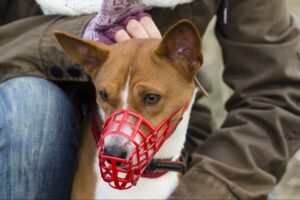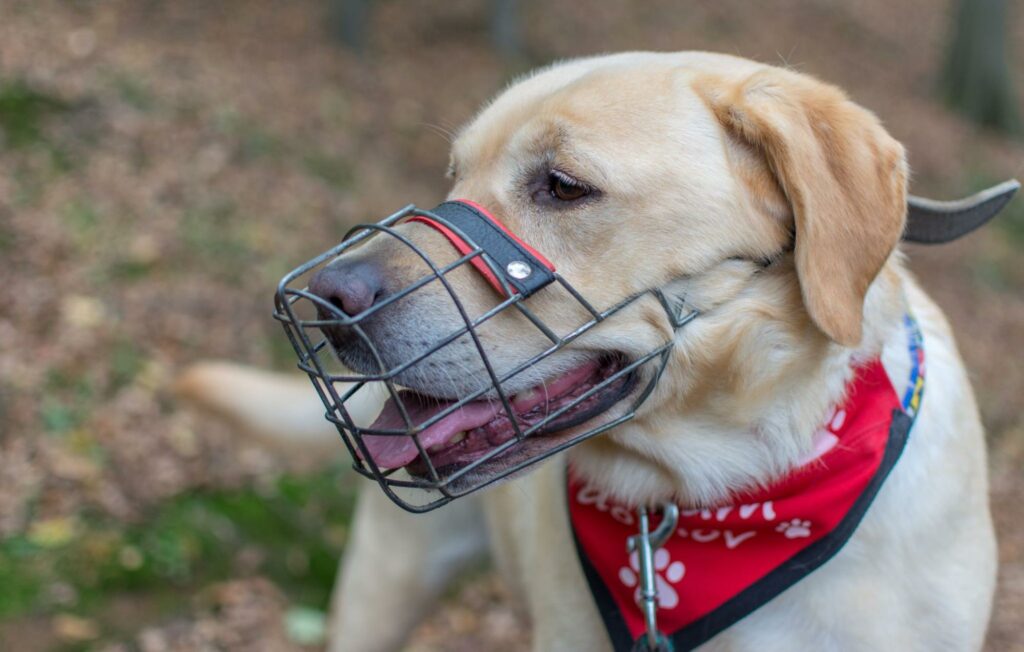Muzzles on a pup usually send a negative message thanks to the movies, media, and tv. One might think a muzzled dog is prone to vicious attacks or biting. Because of how muzzles have been portrayed, they are considered to be used for discipline rather than for training.
Whether you have an aggressive dog or not, it’s a good idea to get them accustomed to wearing a muzzle. There are many situations where it can be helpful or even required, and preparing your dog in advance can make a big difference in how he reacts. Allow us the opportunity to help you turn the misunderstanding or myth about muzzles into the truth of how when, used appropriately, it can be a tool in training your pup.
What Are Dog Muzzles?
A dog muzzle is an apparatus placed over the nose and mouth to prevent them from biting or opening its mouth. There are many different options, and you can be sure to find the perfect fit for your pup.
What is the Purpose of a Dog Muzzle?
Some owners choose to muzzle their dogs because they are proactive in a situation that may cause their pup to respond negatively. Rather than being fearful of a muzzled dog, be thankful that the owner takes precautions and has your safety in mind. Keep in mind that muzzling your pup should never be used in place of training.
Why Do Dogs Wear Muzzles?
There are many reasons why a dog is muzzled. The dog could be recovering from an injury or maybe it gets nervous around strangers. In some cases, there are laws for certain breeds of dogs that require them to be muzzled when strange people or other dogs are present. Muzzles should not be used for dogs that bark, chew, or eat things off the ground. It should also not be used for a puppy who is play biting. You should contact a dog trainer for help with those issues.
What are the Benefits of Dog Muzzles?
Here are just a few of the benefits of using a dog muzzle.
Keep People and Animals Safe
Rehabilitation of aggressive behaviors doesn’t happen overnight, so a muzzle can be an essential tool as you go through the process. But it’s also a valuable tool if you have a new dog and aren’t sure how she will react in a new situation, such as a dog park.
The key, though, is to ensure that the muzzle is seen as a calming tool to your dog and isn’t contributing to or creating anxious energy.
Help Others Feel More Relaxed around Your Dog
In rehabilitation, one problem that aggressive dogs face is the nervous and fearful energy that people tend to exhibit around them. Certain breeds may also experience this reaction due to stereotyping, whether or not they have ever exhibited aggressive behaviors.
The negative energy that other people give off can trigger aggressive behavior. Avoid “Hannibal Lecter” style muzzles, and instead find a muzzle that sends a positive, more uplifting message to others, like Cesar’s Funny Muzzle. This muzzle can help alleviate some of the problems.
Help You Feel More Relaxed
An even more considerable influence on your dog’s behavior is your energy. Knowing that your dog cannot bite due to the muzzle can help you maintain your calm, assertive energy, particularly if you’re confronting a new situation. If your dog has a history of biting, it would be best to train them with the muzzle sooner rather than later.
Travel Abroad Together
In many countries, dogs of specific sizes or breeds are required to wear a muzzle by law. If you are planning foreign travel with your pup, look into laws in that country, and prepare your dog in advance.
You should not rely on a muzzle as a solution to any behavioral issue. Seek the help of a canine professional to figure out how it can best fit into your dog’s rehabilitation strategy.
How to Choose a Dog Muzzle

Purpose
As you begin the process of choosing a muzzle, you should consider the purpose behind your motivation. If you plan to take your furry friend to a stressful place like the vet, a muzzle will help prevent them from biting. Maybe you’re going to the dog park where there will be lots of strange people and dogs. Again, dogs respond differently in situations like this. Muzzling is a safe option in order to protect yourself and others.
Comfort
Choosing a comfortable muzzle for your canine is essential to their success when it’s time to wear it. Depending on your dog’s breeder and size will be factors to consider when looking at your options.
Style
There are various types of muzzles for you to choose from, and you may find that trying out a few will give you the best results for selecting the proper one. Below are some of the available muzzles on the market.
- Leather Police Style Muzzle: used for aggressive dogs and is very hard to remove when fitted appropriately.
- Nylon Muzzle: this style of muzzle is designed to keep your dog’s mouth wholly closed. For that reason, it is only safe to use for 10-15 minutes at a time.
- Leather Harness Muzzle: this style is designed for non-aggressive pups that allow them to pant and drink.
- Wire Basket Muzzle: the wire style is typically better quality than the plastic option. Your pup can efficiently pant, drink, and some can eat.
- Plastic Basket Muzzle: this muzzle is great for everyday use for things such as walks in an area that requires your pup to be muzzled. The downfall is this option is too easy for them to remove if the dog tries to attack.
- Jafco Muzzle: this is a plastic-style basket that has leather, nylon, or plastic straps. This durable option that will last a long time with everyday use and comes in many sizes.
Cesar Millan created the funny muzzle as an effective but playful-looking muzzle. This style allows your pup to look more approachable and not cause a red flag upon first glance. Check out Cesar’s motivation behind designing this muzzle.
Dog Muzzle Tips for Training
A proper fitting muzzle is essential. The device should be well-fitting and comfortable for your pup. Start training it to wear the muzzle before you need to use it. Once your dog is used to having one on, it will be a breeze for both of you.
When it comes to getting the muzzle on your dog’s snout, you will want to start the training slowly. Stock up on some treats your pup cannot refuse, such as cheese, hot dogs, cooked chicken, or whatever else you feel is a motivator. Show the muzzle and treats to your dog at the same time. The goal is for your pup to associate good anytime he sees the muzzle. Add some treats into the bottom of the muzzle, so he has to work at getting the treats out. Eventually, you will be able to slide the device on the snout. Lastly, work on how long the strap is latched. Build up in small increments like 15 seconds, 30 seconds, 1 minute, 2 minutes, and so on. Once you can get to 15-20 minutes inside your home, you will be ready to use it during outings.
Keep an eye on your dog to make sure they do not overheat while wearing the muzzle, particularly the tighter fitting ones that do not allow them to open their mouth to pant. Panting is the pup’s natural way to cool their bodies. Monitor them closely during every use and especially during scorching days.
As mentioned before, muzzles are not to be used as a punishment tool for dogs who bite, puppies who won’t behave, or canines who eat anything and everything. These devices are solely for training and protective purposes











